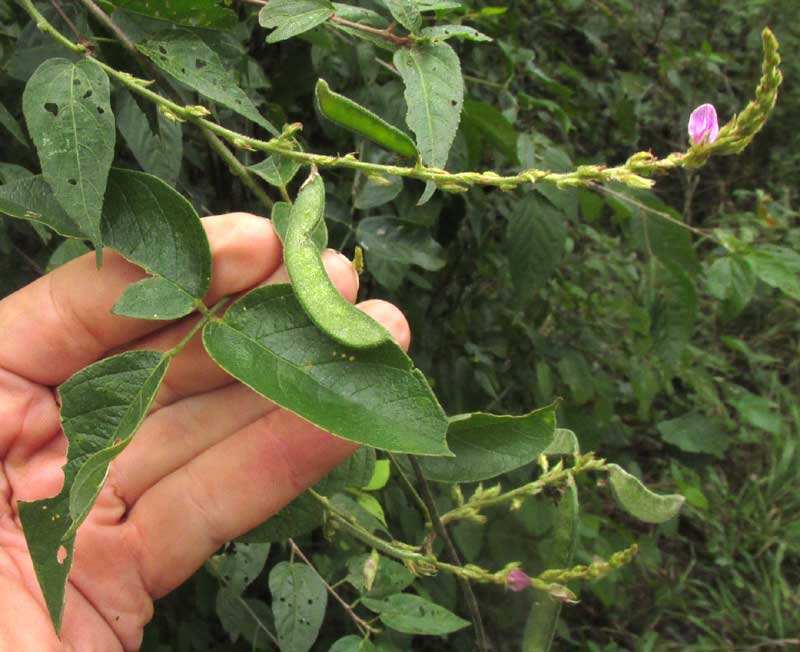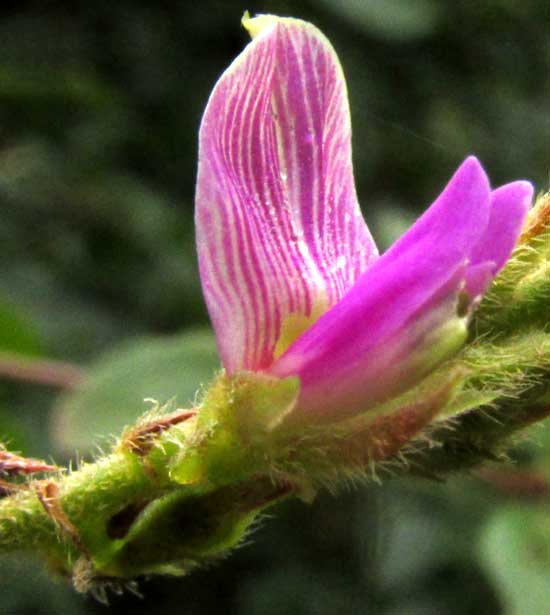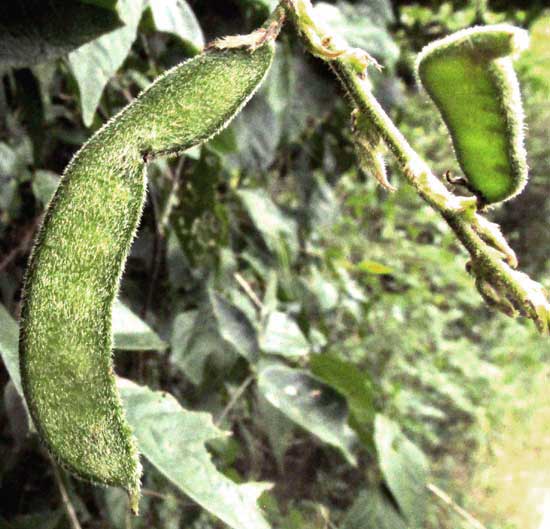Excerpts from Jim Conrad's
Naturalist Newsletter
from the December 21, 2018 Newsletter issued from Rancho Regensis north of Valladolid, Yucatán, MÉXICO;
elevation ~40m (~130 ft), N~20.876°, W~88.170°
MILKPEA VINE FLOWERING
Beside the trail passing through the weedy cleared area below the power lines near the main highway, a bean vine twined tightly around a bush stem, its long, curving, slender flower clusters bearing both flowers and fruits, as shown below:

It was obviously a bean vine -- a member of the huge Bean Family, the Fabaceae -- as indicated by the legume-type fruit pod, the flower's shape, and the compound leaf with three leaflets (trifoliate) so commonly seen in the family. Below, a close look at the flower shows the typical Bean Family structure:

There the top petal, bearing many fine, white stripes along its length and a yellow spot at its base, is the "standard." The two slender, darker lilac petals pointing at the edge of the image's right side are the "wings," and you can hardly see the two bottom petals, which are joined along their common margin to form a scoop-like "keel." The typical bean-type legume is shown below:

This is GALACTIA STRIATA, widely distributed from Florida and Texas in the US south through Mexico and Central America into South America, as well as in much of tropical Africa, India, China and New Guinea. In the US often it's called the Florida Hammock Milkpea, but Florida represents just a minuscule portion of its total homeland, and here it's certainly not among hammocks, so I just call it Milkpea, though it's unclear what it has to do with milk.
It's fairly commonly seen in the Yucatan, often in weedy habitats. I find no human uses for it, though certain animals surely must enjoy nibbling on those sizable bean pods. It's just one of those species existing to exist, and in that there's something worth celebrating, too.